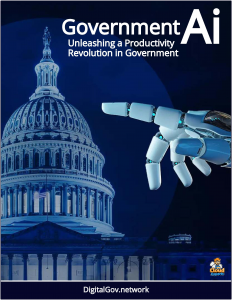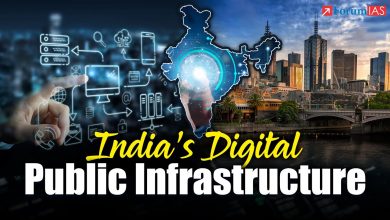 In an era where artificial intelligence has ascended to hyperintelligence, governments stand at the precipice of a transformative revolution.
In an era where artificial intelligence has ascended to hyperintelligence, governments stand at the precipice of a transformative revolution.
No longer confined to automation, AI now wields the power to reason, adapt, and innovate at scales previously unimaginable, reshaping the essence of public service.
From crafting predictive policies to delivering real-time crisis management, from tailoring citizen services to fortifying national security, AI is evolving from a tool into a collaborative force in governance.
Government AI: Government Services in an Era of AI Hyperintelligence dives into this seismic shift, illuminating the technologies, strategies, and ethical stakes of integrating AI into the heart of government operations. This book is a roadmap for a future where algorithms and human leadership converge to redefine civic life—exploring the exhilarating potential and navigating the profound risks of this new era.
Ai for the People: Unleashing a Productivity Revolution in Government
Imagine a world where government doesn’t just react to crises but anticipates them, where red tape unravels at the speed of thought, and where every citizen’s voice is heard and understood with precision no human institution could ever achieve.
The Reform Think Tank believes Ai can unlock a ‘productivity revolution’ in Government, fostering an innovative mindset, streamlining governance, operational guidance, funding and procurement, and fixing the underlying problems of legacy systems and data quality and access. They’ve set out eight ideas – including a new pilot evaluation process and funding for scaling up projects – for using AI to increase productivity in government.
This is a sentiment mirrored by other industry organizations and keynote executives, such as the head of the NAO. Gareth Davies says:
“AI is rightly at the top of the agenda, with clear potential for reducing the time taken for routine tasks, augmenting the work of skilled experts and making public services easier to use. The question is not whether AI will make a difference to productivity but how to maximise the benefits whilst managing the risks.”
In this panel talk experts from the Patent Office and Depts of Justice and Energy explore how groups at the federal and state level are increasingly pushing to digitize and make use of AI. Government groups focusing on areas like healthcare, patents, commerce, transportation, energy and more can all improve their core products and services by leveraging AI. Government groups can also stand to benefit from intelligent automation to reduce human labor on tedious back office processes.
Engineering a Digital Government with Ai
They support this with a detailed report that provides a governing framework for the adoption of Ai in Government. Similarly Harvard shares a guide offering numerous use case ideas, entitled ‘Ai for the People‘.
As the Institute for Government explores the challenge is moving from pilots to full projects, and to support this there are active projects that can inspire and educate others too, such as ScotRail deploying AI to reduce emissions and improve energy efficiency at its stations and depots, and Hertfordshire is testing predictive road maintenance.
This is just skimming the surface. There are a multitude of possible use cases where Government’s can utilize Ai to great effect. AI’s potential in governance is as vast as it is varied, touching every facet of public service.
Our series will document a comprehensive catalogue of use case blueprints, showcasing how AI can revolutionize numerous government functions.
From predictive policing that anticipates crime hotspots to AI-driven healthcare systems optimizing resource allocation, from automated tax compliance reducing fraud to dynamic urban planning adapting to real-time population shifts—these scenarios illustrate AI’s transformative impact. Each blueprint provides a detailed framework: objectives, implementation strategies, ethical considerations, and measurable outcomes.
AI Platforms: The Technology Required and How to Implement It Securely
The foundation of government AI lies in robust, scalable, and secure platforms that can harness hyperintelligent systems.
Our guide delves into the technological architecture needed to power AI-driven governance—cloud infrastructure, quantum computing interfaces, and advanced machine learning frameworks. It explores how to integrate these systems with legacy government databases while ensuring data sovereignty, privacy, and resilience against cyber threats.
From encryption protocols to ethical AI guardrails, we outline practical steps for secure implementation, drawing on real-world case studies and cutting-edge innovations. This section equips policymakers and technologists with the blueprint to build AI ecosystems that are not only powerful but also trustworthy, ensuring public confidence in an AI-augmented state.
Together, these sections form a comprehensive guide to navigating the AI-driven future of governance—a future where technology empowers, efficiency soars, and the bond between state and citizen is redefined. Join us on this electrifying journey into the heart of Government AI, where the stakes are high, the possibilities are limitless, and the future is now.




